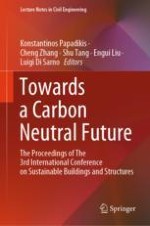2024 | OriginalPaper | Buchkapitel
Indoor Thermal Comfort Prediction Model for Patients in Rehabilitation Wards
verfasst von : Puyue Gong, Yuanzhi Cai, Bing Chen, Cheng Zhang, Spyros Stravoravdis, Yuehong Yu
Erschienen in: Towards a Carbon Neutral Future
Verlag: Springer Nature Singapore
Aktivieren Sie unsere intelligente Suche, um passende Fachinhalte oder Patente zu finden.
Wählen Sie Textabschnitte aus um mit Künstlicher Intelligenz passenden Patente zu finden. powered by
Markieren Sie Textabschnitte, um KI-gestützt weitere passende Inhalte zu finden. powered by
